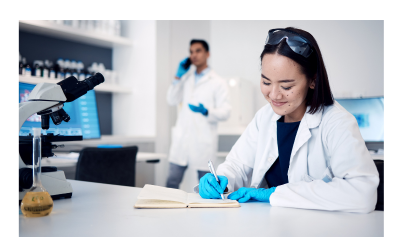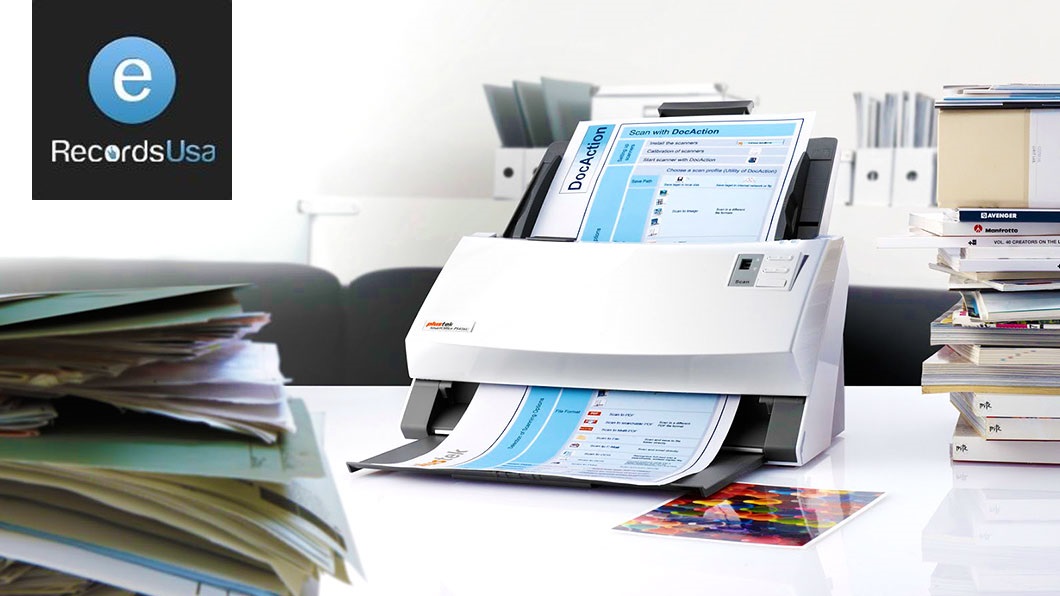In an era where reproducibility crises and research retractions make headlines, data integrity has emerged as one of the most vital pillars of trustworthy science. According to a study published in Nature, over 70% of researchers have failed to reproduce another scientist’s experiments — often due to unclear records, inconsistent data, or inaccessible documentation.
Data integrity, in the context of scientific research, refers to the accuracy, completeness, consistency, and reliability of recorded information throughout its lifecycle. It ensures that findings are credible, repeatable, and compliant with regulatory requirements such as FDA 21 CFR Part 11, GLP, and GMP.
Yet, many laboratories still rely on outdated systems — handwritten lab notebooks, spreadsheet-driven tracking, or fragmented data capture. These methods are prone to error, difficult to standardize, and fail to meet the expectations of modern regulatory frameworks.
Enter digital lab tools: platforms like Electronic Lab Notebooks (ELNs), Laboratory Information Management Systems (LIMS), and cloud-based data validation technologies. These tools not only digitize and secure scientific workflows, but also actively enforce integrity through automation, audit trails, and compliance mapping.
This article explores how modern digital lab systems enhance scientific data management, help meet ALCOA principles, and establish a foundation for reproducible, transparent research.
What Jeopardizes Data Integrity in Traditional Labs?
1. Manual Entry & Human Error
In traditional lab environments, manual data recording is a breeding ground for transcription mistakes, omitted observations, and unintended bias. Whether it’s jotting down numbers mid-experiment or transferring readings from one system to another, the lack of automation means every step adds risk to accuracy and reproducibility.
2. No Audit Trail or Traceability
Paper-based lab notebooks and fragmented spreadsheets provide little to no visibility into who changed what and when. This absence of audit trails not only weakens accountability but can also result in non-compliance with regulations like FDA 21 CFR Part 11, which mandates traceability in digital records.
3. Data Loss, Inconsistent Formats & Poor Collaboration
Physical records can be damaged, misplaced, or degraded over time. Meanwhile, storing data in inconsistent formats — PDF scans, raw spreadsheets, or handwritten notes — hampers data analysis and makes cross-team collaboration incredibly difficult.
4. Failing the ALCOA Test
The ALCOA principles — Attributable, Legible, Contemporaneous, Original, and Accurate — define the gold standard for research data. Traditional documentation methods struggle on every front:
- Handwriting may be illegible
- Entries might be undated or misattributed
- Duplicated pages or modified notes can compromise originality and accuracy
Without digitization and standardization, most paper-based systems fall short of maintaining long-term scientific integrity.
How Digital Lab Tools Fortify Data Integrity?
1. Automated Data Capture & Validation
Digital lab tools like ELNs and LIMS can automatically log experimental data directly from instruments — eliminating manual transcription errors. These platforms often include built-in validation protocols that ensure numeric formats, timestamps, and logic rules are enforced before data is accepted into the system.
Example: A spectrophotometer connected to an ELN auto-uploads results with the correct metadata, eliminating typos and unit mismatches.
2. Real-Time Audit Trails & Version Control
Every change in a digital lab system is time-stamped, user-attributed, and preserved. ELNs and LIMS record the full history of actions — edits, annotations, deletions — ensuring accountability, traceability, and compliance with regulatory frameworks like GxP or 21 CFR Part 11.
These audit trails are crucial for investigations, QA/QC validation, and inspections by regulatory agencies.
3. Secure, Encrypted, and Redundant Storage
Cloud-based digital lab platforms offer bank-grade encryption, automatic backups, and user-specific access controls. This prevents unauthorized tampering and ensures data integrity during storage, retrieval, and archiving.
Bonus: If a local machine fails, data can be retrieved instantly via cloud redundancy — a critical aspect of disaster recovery strategies.
4. Standardized Data Formats & Interoperability
LIMS and ELNs enforce predefined data templates, field constraints, and controlled vocabularies, reducing inconsistencies across lab teams and departments. This standardization is vital for:
- Data analysis pipelines
- Multi-site collaborations
Structured data formats also simplify adherence to FAIR principles (Findable, Accessible, Interoperable, Reusable).
5. Enhanced Collaboration & Data Sharing
Modern lab tools enable real-time collaboration, allowing multiple researchers to access, comment, or co-author experiments from anywhere. This eliminates bottlenecks caused by inaccessible notebooks or inconsistent documentation, thereby improving research reproducibility and team-wide data integrity.
Meeting the ALCOA Standards with Digital Systems
The ALCOA principles are the backbone of data integrity in regulated environments like pharmaceuticals, biotech, and clinical research. Standing for Attributable, Legible, Contemporaneous, Original, and Accurate, these principles define what makes scientific data trustworthy.
Digital lab tools like ELNs, LIMS, and digitization platforms help ensure that each ALCOA element is not only met—but automatically enforced.
- Attributable – Each data entry in a digital system is tied to a unique user identity, with credentials, timestamps, and digital signatures. This means it’s always clear who performed an action, when, and under what role or permission level.
- Legible – Typed input fields, search-friendly interfaces, and structured templates eliminate handwriting legibility issues. Audit trails ensure that any changes or comments are also clearly documented and readable across teams.
- Contemporaneous – Time-stamping is automated. Whether data comes from an instrument, a manual input, or a file upload, it’s instantly recorded with a verifiable date/time, satisfying both ALCOA and FDA/EMA guidelines.
- Original – Digital systems retain a source copy of every entry, and every change is tracked via versioning. This guarantees that the original record is preserved, and every modification is documented without overwriting history.
- Accurate – Digital tools reduce transcription errors with automated calculations, validation fields, dropdowns, and consistency checks. Accuracy becomes a system-embedded property—not just a user-dependent goal.
Choosing the Right Digital Lab Tools for Data Integrity
Digital transformation in the lab isn’t just about going paperless — it’s about choosing systems that are engineered to preserve integrity from input to archive. With so many tools on the market, selecting the right one depends on aligning features with your lab’s scientific goals, regulatory needs, and data complexity.
1. Assess Your Lab’s Data Integrity Requirements
- Start with a gap analysis of your current documentation process. Consider:
- Where data errors typically occur
- How well audit trails are maintained
- What compliance standards you must meet (e.g., GxP, ISO, 21 CFR Part 11)
2. Prioritize Integration with Instruments and LIMS
Ensure the tool can connect to lab equipment or interface with your existing LIMS, ELN, or ERP systems. Integration reduces manual entry and supports real-time data flow, reinforcing accuracy and reducing redundancy.
3. Demand Robust Data Security and Access Control
Look for features like:
- Role-based permissions
- Encryption (at rest and in transit)
- Secure backups and disaster recovery protocols
These are essential to uphold data privacy and prevent tampering.
4. Evaluate Ease of Use and Training Needs
Even the most compliant tool fails if it’s too complex to adopt. Opt for platforms with:
- Intuitive interfaces
- Built-in templates for repeat workflows
- Minimal learning curves for new users
5. Consider Scalability and Vendor Support
Choose systems that can grow with your lab. Look for flexible licensing, multi-site deployment options, and responsive customer support — especially if your organization operates under tight compliance requirements.
The Future of Data Integrity — Standardization, FAIR Principles & Digital Maturity
As laboratories evolve from isolated documentation practices toward integrated data ecosystems, future-proofing data integrity means aligning with global data standards and scalable frameworks.
1. Embracing the FAIR Data Principles
The FAIR principles—Findable, Accessible, Interoperable, and Reusable—are quickly becoming the gold standard for modern lab data management.
- Findable: Digital tools ensure that experiments and metadata are searchable and indexed.
- Accessible: With role-based access and cloud storage, teams can retrieve records across locations.
- Interoperable: Standardized formats and APIs allow seamless data sharing between platforms.
- Reusable: Complete documentation and metadata ensure that data can be reused for future research or regulatory reviews.
Incorporating FAIR practices ensures your lab’s data stays valuable—not just for compliance, but for long-term scientific utility.
2. The Push for Global Data Standards
Organizations like the NIH, OECD, and ISO are actively shaping the future of lab data compliance. New frameworks emphasize:
- Structured metadata models
- Digital provenance (history of data generation and edits)
- Long-term archiving strategies
These trends signal a shift toward enterprise-level scientific data governance, where digital lab tools are no longer optional—but foundational.
Conclusion — Safeguard Your Research with Digital Lab Tools
In the pursuit of scientific truth, one principle stands above all: data you can trust. And trust starts with data integrity—from the moment it’s captured to the day it’s reviewed or published.
Digital lab tools aren’t just convenience upgrades. They’re essential infrastructure for:
- Preventing transcription errors
- Enforcing ALCOA and FAIR compliance
- Strengthening reproducibility and audit readiness
- Protecting against data loss or manipulation
For labs still managing decades of paper notebooks, the first step toward digital transformation starts with secure, searchable digitization—and that’s where we come in.
Why Choose eRecordsUSA for Lab Notebook Digitization?
eRecordsUSA has over 20+ years of experience in newspapers and magazine scanning to digital format. We bring that same precision and care to the scientific world—digitizing handwritten or printed lab notebooks into compliant, high-resolution, OCR-ready digital archives.
Services include:
- Flatbed and non-destructive book scanning
- OCR processing for handwritten research notes
- Secure, encrypted file delivery (PDF, TIFF, or custom formats)
- Indexing, tagging, and metadata for ELN integration
- Compliant chain-of-custody and audit-ready deliverables
Whether you’re preparing for a regulatory audit or laying the foundation for digital collaboration, our lab notebook scanning services are engineered for integrity.
FAQs
1. What Are the Key Challenges in Transitioning from Paper-Based to Digital Lab Systems?
Transitioning to digital lab systems involves several challenges, including:
- Staff Training: Ensuring that all laboratory personnel are adequately trained to use new digital tools effectively.
- Data Migration: Accurately converting existing paper records into digital formats without data loss or errors.
- System Integration: Integrating new digital tools with existing laboratory information management systems (LIMS) or other software.
- Cost Considerations: Managing the financial investment required for new hardware, software, and training programs.
Addressing these challenges requires careful planning, stakeholder engagement, and selecting user-friendly digital solutions that align with the lab’s specific needs.
2. How Do Digital Lab Tools Ensure Compliance with Regulatory Standards?
Digital lab tools are designed to help laboratories comply with various regulatory standards by:
- Implementing Audit Trails: Automatically recording all data entries, modifications, and deletions, along with user identification and timestamps, to ensure traceability.
- Enforcing Standard Operating Procedures (SOPs): Integrating SOPs into workflows to ensure consistent adherence to approved protocols.
- Providing Access Controls: Restricting data access based on user roles to protect sensitive information and maintain confidentiality.
- Facilitating Reporting: Generating comprehensive reports that meet the documentation requirements of regulatory agencies.
These features support compliance with standards such as FDA 21 CFR Part 11, Good Laboratory Practice (GLP), and Good Manufacturing Practice (GMP).
3. Can Digital Lab Tools Integrate with Existing Laboratory Instruments?
Yes, many digital lab tools are designed to integrate seamlessly with existing laboratory instruments. This integration allows for:
- Automated Data Capture: Direct transfer of data from instruments to the digital system, reducing manual entry errors.
- Real-Time Monitoring: Continuous tracking of instrument performance and experiment progress.
- Centralized Data Management: Consolidation of data from various instruments into a single platform for easier analysis and reporting
When selecting digital lab tools, it’s essential to ensure compatibility with current instruments and consider the availability of necessary interfaces or adapters.
4. What Are the Data Security Measures in Digital Lab Systems?
Digital lab systems employ multiple data security measures to protect sensitive information, including:
- Data Encryption: Encoding data during storage and transmission to prevent unauthorized access.
- Regular Backups: Performing scheduled backups to safeguard against data loss due to hardware failures or cyber incidents.
- User Authentication: Implementing robust login procedures, such as multi-factor authentication, to ensure that only authorized personnel can access the system.
- Audit Logs: Maintaining detailed records of system activity to detect and investigate any unauthorized actions.
These measures help maintain the integrity and confidentiality of laboratory data.
5. How Do Digital Lab Tools Support Data Integrity During Collaborative Research?
In collaborative research environments, digital lab tools enhance data integrity by:
- Providing Controlled Access: Allowing researchers to access only the data pertinent to their role, reducing the risk of accidental or unauthorized modifications.
- Enabling Version Control: Tracking changes made to documents or datasets, ensuring that all collaborators are working with the most current information.
- Facilitating Communication: Offering platforms for team members to discuss data, methodologies, and findings within the system, ensuring that all communications are documented.
These features promote transparency, accountability, and consistency in collaborative research projects.














